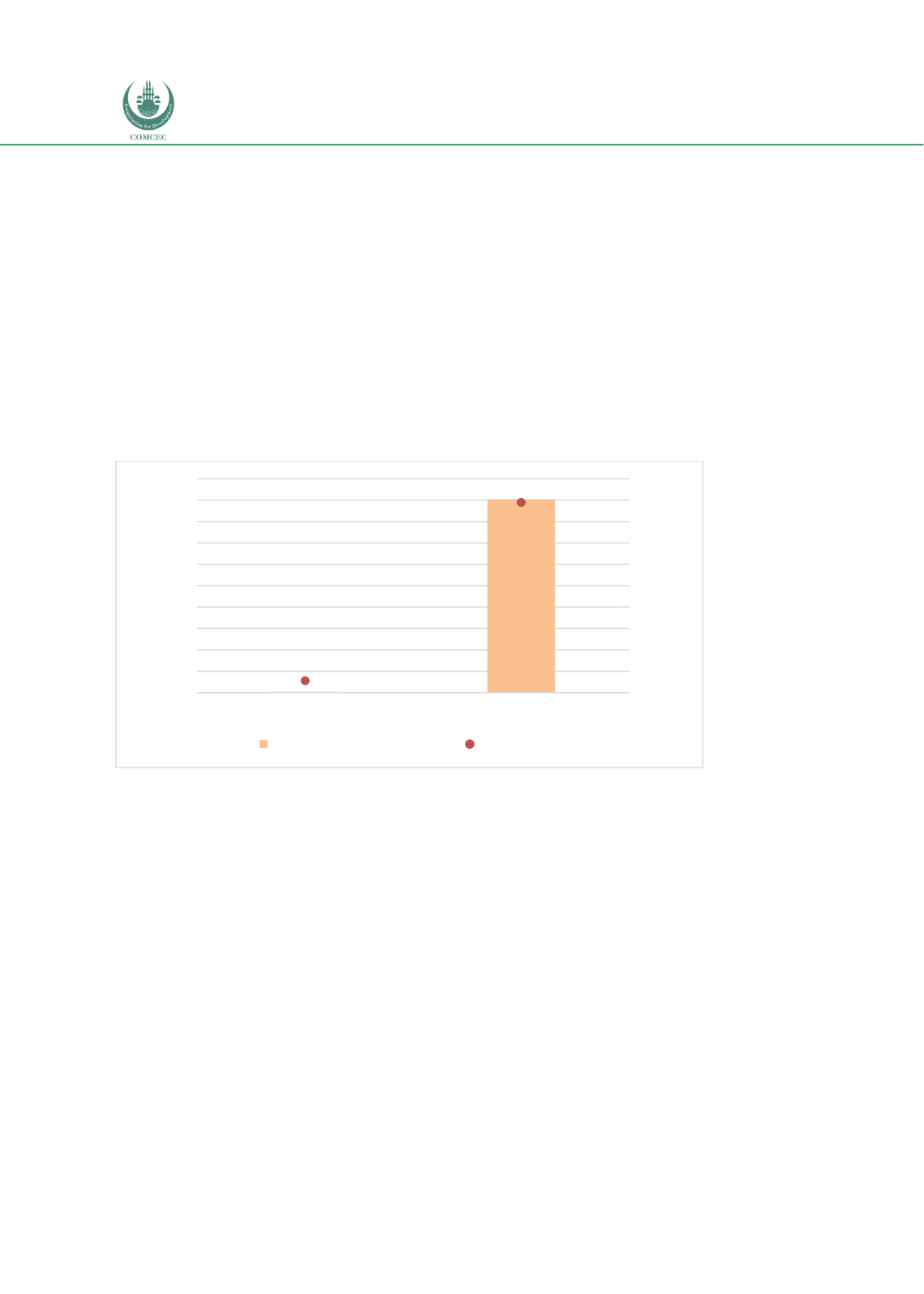

Infrastructure Financing through Islamic
Finance in the Islamic Countries
122
infrastructure in the education and social sectors. However, the contribution of Waqf to
infrastructure financing is quite insignificant.
4.3.5.5. International Sources
The IDB has been involved in infrastructure financing in Nigeria since 1991. It has been
involved mainly in Petrochemical, Energy, Educational, Health, Water, and Agricultural
infrastructure financing. Chart 4.3.5 shows the project financing provided by IDB to Nigeria
during 1976-2016 and 2016 onwards. While 16 projects worth USD 452 million were financed
by IDB during 1976-2016, one project valued at USD 1.6 million has been funded since 2016.
Currently, the active projects in the country financed by IDB include the Bilingual Education
Project in nine (9) States of the Federation and the Kano State Agro-Pastoral Development
Project.
Chart 4.3. 5: No. of Projects and Financing from IDB: Nigeria (USD million)
Source:
https://isdbdata.github.io/monograph2017.html4.3.7.
Conclusion and Recommendations
Nigeria has a poor infrastructure in all sectors of the economy. In 2014, a National Integrated
Infrastructure Master Plan was developed to provide a blueprint for the infrastructure
transformation of the country. The blueprint identified the infrastructure gap and estimated
that Nigeria needed to make a total infrastructure investment of $3 trillion by 2043. The
blueprint highlighted the national policies and framework for infrastructure development,
particularly the PPP framework and other funding models. It identified the Infrastructure
Concession Regulatory Commission (ICRC) Act (Establishment) 2005 as the key legislation in
the infrastructure development framework as well as some other general laws and sector-
specific laws which provide the enabling environment for investment in infrastructure
development.
The government is, however, constrained by budgetary deficits if required to solely finance the
infrastructure needs. Hence the need for the PPP framework as well as domestic and external
borrowings in order to finance the infrastructure needs is recognized. The financing options
advanced by the blueprint present a great opportunity for Islamic finance. Despite this great
1.6
452
1
16
0
2
4
6
8
10
12
14
16
18
0
50
100
150
200
250
300
350
400
450
500
Total Project Financing 2016+ Total Project Financing (1976-2016)
No. of Projects
USD Million
Total Financing (US$ Million)
No. of Projects
















